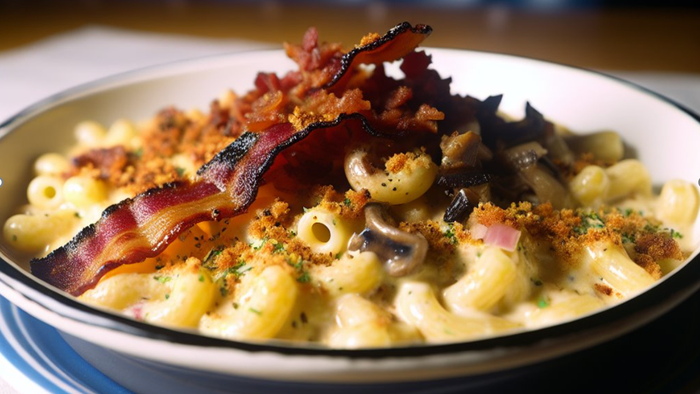Catersource State of the Industry 2022 Part 2Catersource State of the Industry 2022 Part 2
Corporate making a comeback?
January 2, 2023
.png?width=1280&auto=webp&quality=95&format=jpg&disable=upscale)
Editor's note: This is Part 2 in our State of the Industry report. To view Part 1 (where we look at some recent survey results and the 2022 wedding boom) click here.
Corporate catering is essentially the last piece of the puzzle in the catering industry's rebound. Weddings are happening, fundraisers are taking place (in some cases in a hybrid format), and people are gathering once again at social events. Even drop-off catering saw a slight uptick from 2019 to 2021, according to Carl Sacks (from 6.96% to 9.52%) during a session he presented on corporate catering during the LCA Executive Summit in November 2022. However, full-service corporate events (client/customer marketing events, employee morale events, and celebratory/milestone achievement events) largely remained the elusive white whale for much of 2022.
“Its recovery has not been as quick as we had hoped,” said Sacks. “It’s been problematic for us.”

The Detroit Athletic Club made its corporate event comeback in 2021 with the return of its Back to the Club Weekend (a 2022 ACE Awards finalist). Photo courtesy Doug Coombe

The Back to the Club Weekend event featured a series of liquor tastings, specialized dinners (including a Seafood Frenzy), and activities. Photo courtesy Doug Coombe
Between 2019 and 2021, the average percentage of business for full-service corporate catering dropped from 29.06% to 16.29%, according to Sacks. The dramatic drop in business can be attributed to the pandemic, the rise in at-home workers, and the layoffs that continue to plague the corporate world.
“We’re just starting to pick up and they’re laying off people,” Sacks said. “How do we shift and get ready for these inevitables and still make money?”
In 2022, corporate delivery catering has even started to struggle as restaurants and ghost kitchens start to make a major play for office lunches.
“This was a great low hanging fruit business opportunity,” Sacks said.
When looking at full-service corporate events, one of the biggest hurdles that caterers are currently facing (and will continue to face) is shorter and shorter turnaround times, most likely attributed to a constant flux in staffing.
“What the market is showing us is that it’s such an on-demand market,” said Kris Reinhard (Bold Catering and Design) during the session at LCAES. “They’re calling us a week before for a 300-person event. When do those corporate clients feel comfortable planning an event six months ahead? That’s just the window of our world right now, everything can potentially turn on a dime.”
Caterers appear to have two different opinions of how to address this issue: on the one hand, it is the responsibility of caterers to “re-educate our clients,” said Jeff Ware (Catering by Michaels) during the same session.
“There’s always going to be someone who comes in at the last minute, but overall, we need to recalibrate our corporate clients’ expectations.”
On the flip side, however, some caterers see increased opportunity (and revenue) for expedited contracts.
“We need to tell them ‘This is what I can do for you in a week’s period of time’ and then you come out looking good because of it and you get the sale,” said David Haggerty (DSquared Hospitality Company) during the LCAES session. “Plus, if you’re not having to work with someone for weeks on end, you’re saving time and you’re saving money.
“It kinda works for our industry right now quite honestly in a different kind of weird way.”

Chartwells provided meals for thousands of Walmart associates this past summer during the Walmart Associates Week and Shareholders Celebration in Arkansas. Photo courtesy Walmart Inc
Another emerging trend is that destination management groups are contracting with caterers for promotional events to help attract corporate clients back to their organizations.
Although full-service catered corporate events still have an uphill battle to climb, full-service catering isn’t completely dead in the water. Some companies are willing to pay more for a catered lunch as an incentive for employees to come back into the office. One way that they are doing this is by switching from corporate delivery lunches in favor of full-service catered meetings and office events.
During Catersource + The Special Event (held in May in Anaheim), Thomas Whelan (Levy Restaurants) suggested several ways corporate meetings can be elevated beyond the traditional boxed lunch including:
Draft coffee mobile bars
Infused water stations
Theme the meal to a holiday or season: have a Mexican buffet for Cinco de Mayo complete with decorations and a margarita station, for example, or have a tailgating party during football season
Personalized bento boxes
Bagel walls with hanging cream cheese pastry bags
Draft beer truck
An office bodega where employees can grab snacks throughout the day
Dress up a buffet with chalkboards and menus
“Employers have had to step up and offer more for people to come back into the workplace,” Clint Elkins (SB Value) says. “Lunches have been the biggest offering and there is a great need for that in a lot of major cities.”
Check back next week for Part 3 in our State of the Industry report where we'll look at supply chain and staffing.




.png?width=700&auto=webp&quality=80&disable=upscale)
.png?width=700&auto=webp&quality=80&disable=upscale)

